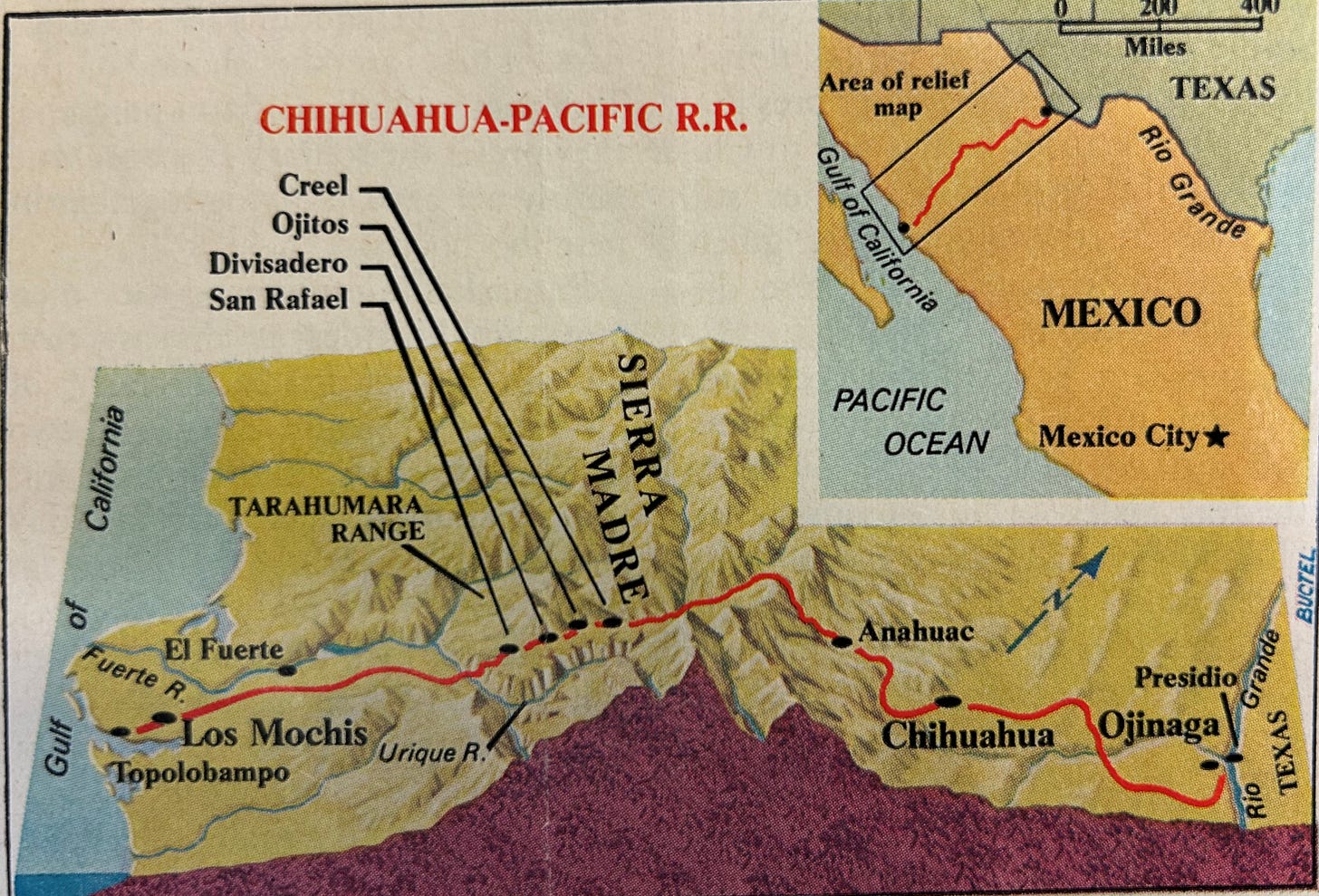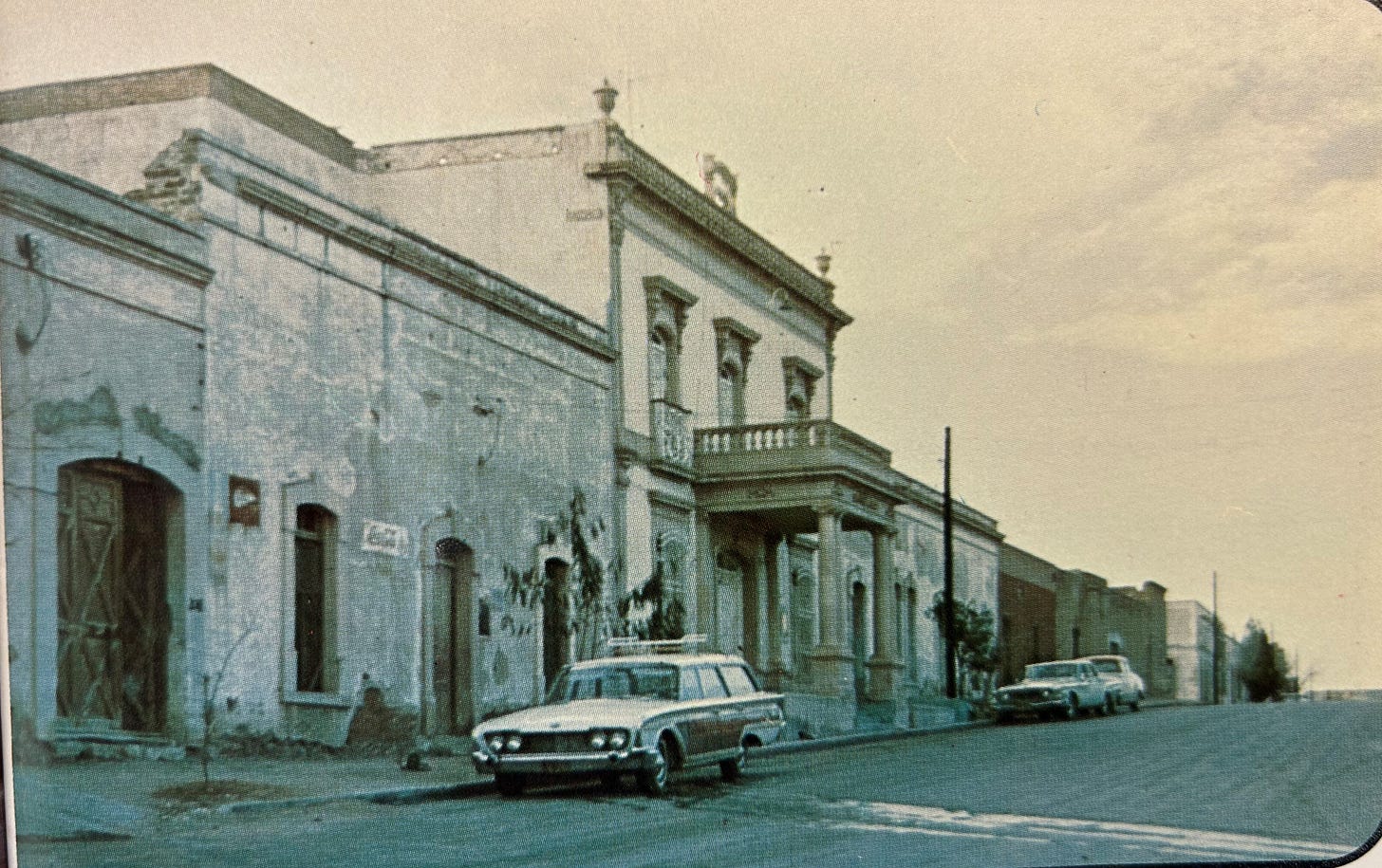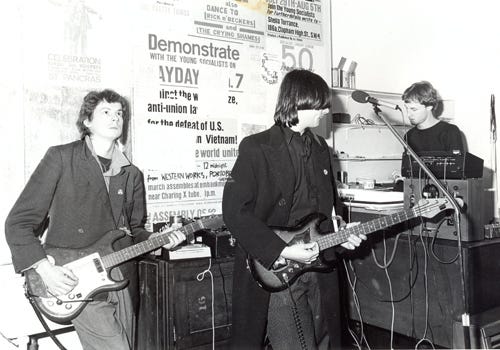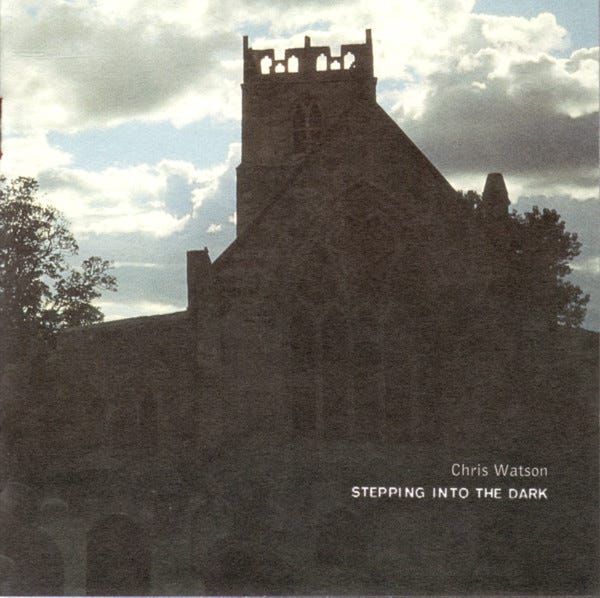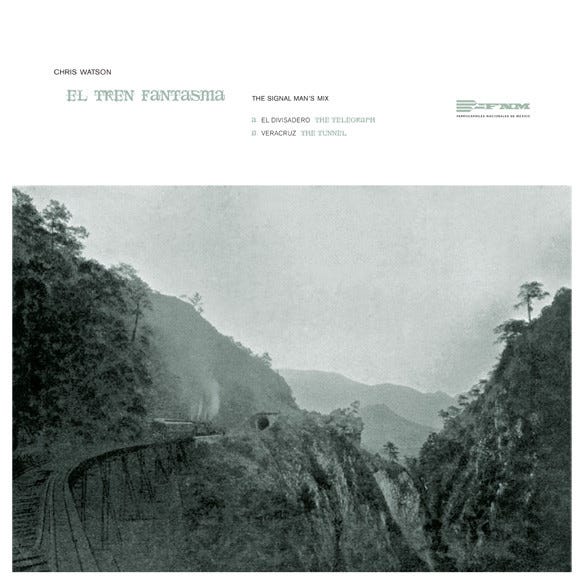It suddenly struck me that, the more I heard when I was outside, the more interesting it was than what I was trying to create in the studio.
-Chris Watson
Last week, I followed Pierre Mariétan’s Rose Des Vents into the fields. Now, I sit on the hillside and see railroad tracks snake through the morning fog. It reminds me of a train ride I took a long time ago….
For Christmas break in 1974, my mom, dad, four siblings, and I took a road trip from White Bear Lake, Minnesota to New Mexico in our station wagon. We celebrated Christmas with my Great-grandmother and Grandmother at my Uncle Bill’s house in Albuquerque. But we didn’t head back to Minnesota after Christmas - the vacation wasn’t over. We got back in the station wagon, drove 8 hours down to Presidio, Texas, parked the car, crossed the border to Mexico, and caught a cab to the train station in Ojinaga:
At Ojinaga, we got on the train for a 16-hour train ride to the west coast town of Los Mochis. Here are some of the old tickets my dad pasted in a book he had for the trip:
The Chihuahua al Pacific Railroad, known as the ChP or Chepe, is a major rail line in northwestern Mexico, linking Ojinaga to Los Mochis. It was opened in 1961, just thirteen years before our journey. The railway was built as a trade route linking the cattle markets in Kansas City with the nearest port on the Pacific Ocean, Topolobampo.
That trip took us two days, with an overnight stop in Creel. In the morning, we toured the Copper Canyon on horseback and then got back on the train for Los Mochis.
Los Mochis was founded in 1893 by a group of American utopian socialists who were adherents of Albert Kimsey Owen, whose dream was to found the perfect city, a colony based on cooperative principles, complete with workers, artisans, and intellectuals, supplied by a railroad line from the United States, with entry at El Paso, across the Sierra Madre mountains, to the Bay of Topolobampo.
We stayed overnight in Los Mochis in the Hotel Santa Ana and the following morning got back on the train for the return trip. We stopped at Divisadero, on the rim of the Copper Canyon. After a short stop, we boarded the train and headed for Chihuahua, where we stayed the night.
In the morning, we visited Pancho Villa’s mansion:
That station wagon out front is exactly what ours looked like.
The following morning, we caught the bus to Ojinaga and made our way back to our car in Presidio, Texas. The following morning, we started the long drive back to Minnesota.
25 years later, in 1999, Chris Watson made the same journey. His trip began in Los Mochis. He rode the train to Chihuahua, where he left the Chihuahua al Pacific Railroad and instead jumped on the Ferrocarriles Nacionales de México, also known as El Tren Fantasma (The Ghost Train), which he rode to the end of the line at Veracruz.
Chris Watson is perhaps most known for founding the English music group Cabaret Voltaire in Sheffield in 1973, initially composed of Watson, Stephen Mallinder, and Richard H. Kirk.
The group took its name from the nightclub that opened in Zurich in 1916:
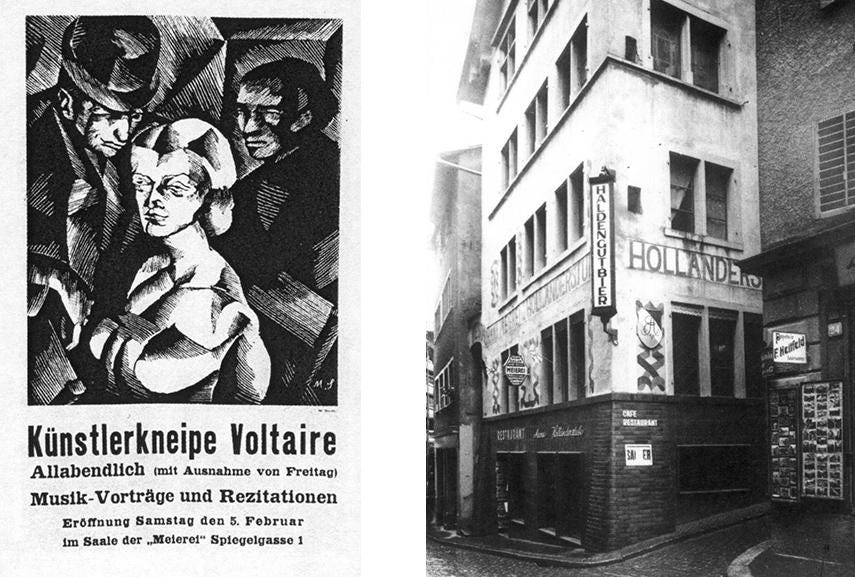
The nightclub was an important spot for the founding of Dada, an art movement of the European avant-garde. It’s clear what direction Watson’s Cabaret Voltaire was headed.
Cabaret Voltaire was one of the most important and influential groups in post-punk industrial and electronic music history. In the early 1970s, Watson began experimenting with electronic devices to make "music without musical instruments." I can hear some of the Brian Eno and Roxy Music influence in one of my all-time favorite Cabaret Voltaire songs Kneel To The Boss from their 1980 album Voice of America:
In 1981, Watson left the band to work for Tyne Tees Television. He also founded The Hafler Trio with Andrew M. McKenzie before becoming a sound recordist with the Royal Society for Protection of Birds. Later he was a sound recordist for many BBC wildlife programs, including David Attenborough’s award-winning Life of Birds.
In an October 2011 Pitchfork interview with Grayson Currin, Watson recalled:
A long time ago, in the late 1970s and early 1980s, I was in a band, Cabaret Voltaire, incorporating sound recordings and field recordings and location sounds into our work. I was always interested in musique concrète and creating music with analog tape recorders. It suddenly struck me that, the more I heard when I was outside, the more interesting it was than what I was trying to create in the studio. I had very little experience with location recordings, so what I needed to do was to get out and amongst it and soak it up, and then try and start working with it.
In 1996, Watson began working with the Touch Music label and released his first solo field recording album Stepping into the Dark:
Stepping into the Dark consists of eleven soundscapes from around the world, each recorded with a camouflaged microphone in fixed locations with long leads to conceal the recording. The idea was to capture the actual sound of a location without external influence. The recordings average about four minutes or about the same length as a pop song. The beauty of these recordings is they require active listening - they are sonic adventures. In 2011, also released by Touch Music, Watson recorded his fourth field recording, El Tren Fantasma, which I find one of his most compelling sound adventures.
Watson’s El Tren Fantasma is a terrific “tone poem… a very personal representation of an experience,” as he recalled in the Pitchfork interview. The 2011 release also included the excellent Signal Man’s Mix:
On January 26, 1999, the fourth episode "Los Mochis to Veracruz" of the fourth season of Great Railway Journeys was broadcast on BBC. Watson spent five weeks working on the project as the sound recorder. It was the last days of the Ferrocarriles Nacionales de México, the great Mexican state railway. To celebrate the occasion, the Mexican government dug out of retirement old presidential carriages from the 1950s and attached them to the back of the trains. During the journey, he lived in the carriage, which had its own bedroom, shower, and dining car.
Watson’s journey began at the station in Los Mochis, where he recorded the second soundscape on the album. It begins with early morning sounds from around the station. Birds sing and roosters crow, as the station awakens. A train arrives, people scurry around the station, and then shortly thereafter departs. The journey has begun:
El Divisidero is a master work. It begins with a train horn fading into a drone, which continues with various rhythms of the train on the track:
Chihuahua begins with the train at the station. Doors open and close, which sound like thunder, before a train horn signals and soon the train departs. It’s on its way to Veracruz:
I find listening to El Tren Fantasma, like Watson’s Stepping into the Dark, a complete musical change of pace, and it relaxes me.
Chris Watson is still out in the field recording natural sounds from around the world. Here’s a great website to find out what he’s up to.
Also, A Life in Sound: Chris Watson features a fascinating selection of programs and soundscapes from his work. In particular, I like the Tweet of the Day selections, like this one of the Morning Dove. Fabulous.
In that 2011 Pitchfork interview, Watson shared: “After I got my first recorder when I was 11 or 12, I got exposed to mainland European contemporary music-- Karlheinz Stockhausen and, in particular, Pierre Schaeffer and musique concrète. I realized it was possible to make this astonishing music with something that wasn't a recognized musical instrument.”
That’s where I’m at with field recordings, the idea of music NOT performed on an instrument is appealing. Also, and this is important, I find that routinely listening to field music trains my hearing. As opposed to typical music, which comes at me and can act as a kind of white noise, what’s interesting about field music is that it has meaning and emotional impact. It also makes me listen more intently to the sounds going on around me. In this way, it helps me feel more present in the place I am at. I like that.
Next week, we’ll take the long way back to the canoe and explore the world of Pierre Schaeffer. Watson’s El Tren Fantasma was inspired by Pierre Schaeffer, who in 1948 recorded Cinq études de bruits (Five studies of noises), the first piece of musique concrète, which begins with, interestingly enough, Étude aux chemins de fer, a study of the railway.
Please hit this link to buy me a cup of coffee, if you’d like to show your guide some appreciation for this and past journeys. Know in advance that I thank you for your kindness and support.
If you like what you’ve been reading and hearing so far on our journey and would like to share this with someone you think might be interested in learning more about our great American art form: Jazz, just hit the “Share” button.
From Astaire to Sun Ra: A Jazz Journey is a reader-supported publication. If you feel inclined, subscribe to my journey by hitting the “Subscribe now” button.
Also, find my playlist on Spotify: From Fred Astaire to Sun Ra.
Feel free to contact me at any time to talk shop. I welcome and encourage that.
Until then, keep on walking….





